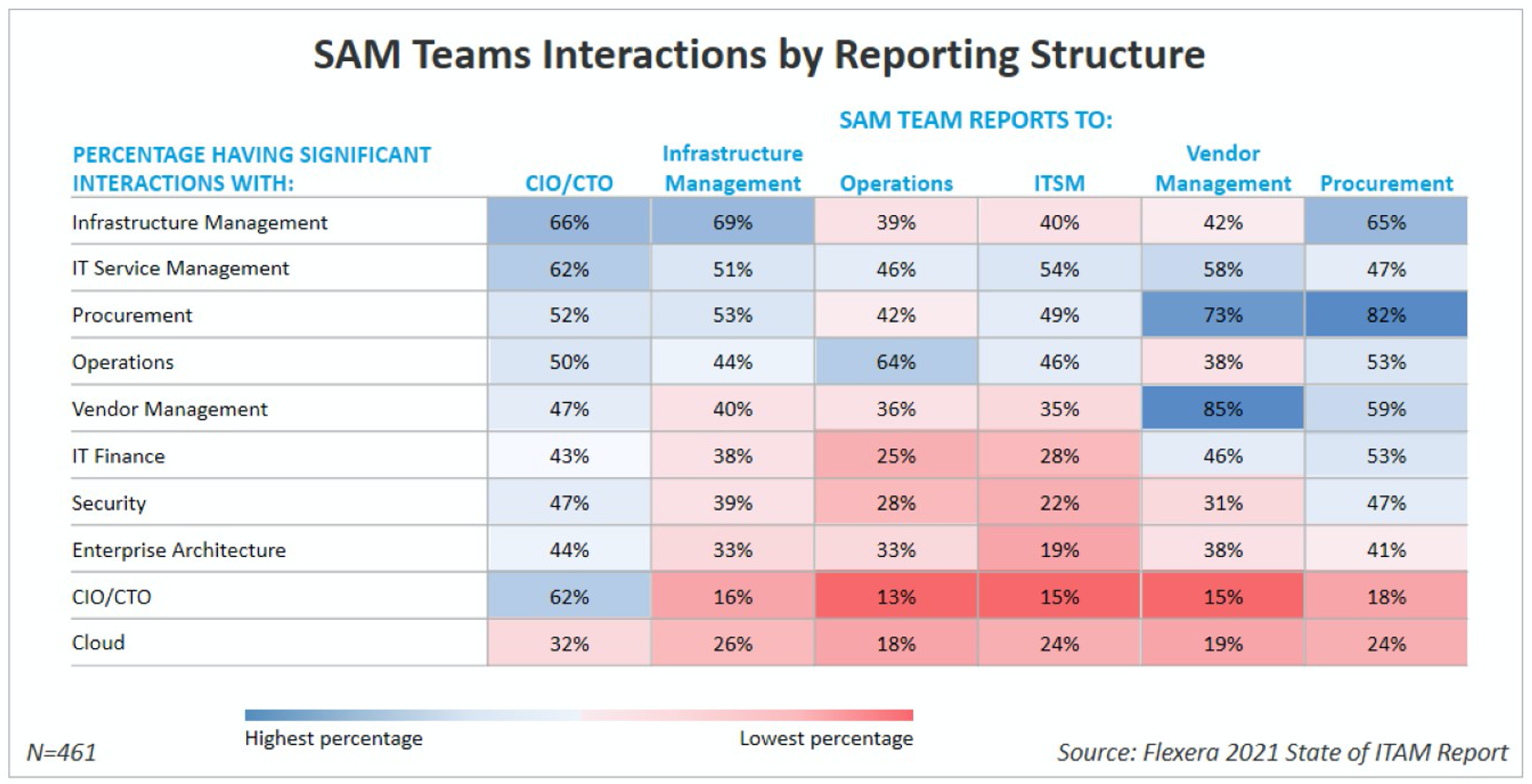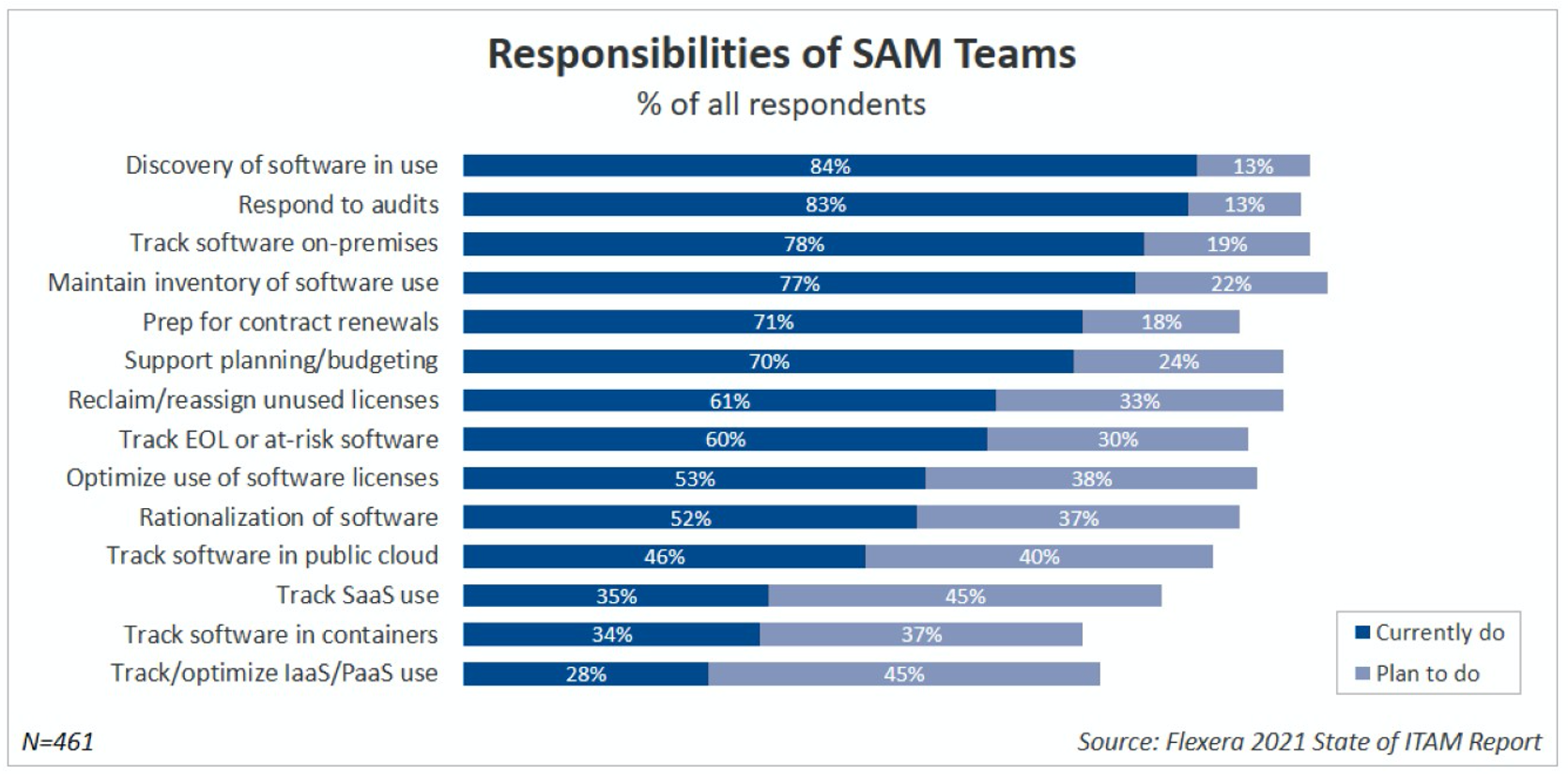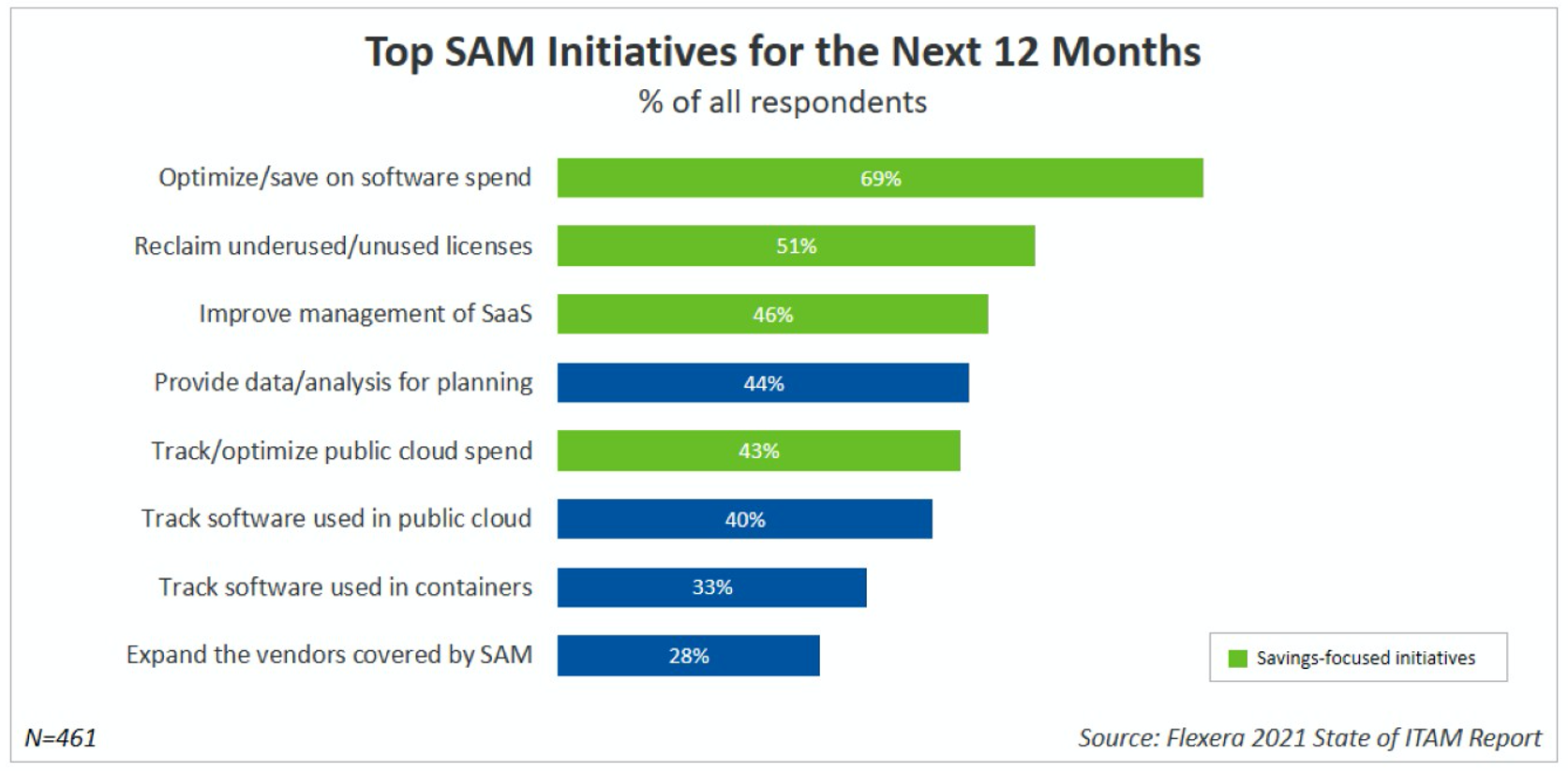Benchmark & Build ITAM Maturity by Aligning with the C-level
Organisations around the world are in a state of flux managing rapid technology changes – a shift to remote working and a need to service customers digitally being brought to the fore. Alongside this, organisations are also grappling with a need to cut costs and manage technology risks. ITAM teams are extremely well-placed to help address these business imperatives. However, in order to do so it’s important for your ITAM programme to be aligned with C-level.
Connections are key
Research from the Flexera 2021 State of ITAM Report indicates that being well-connected is critical to ITAM teams taking this opportunity to drive business change. Only if you report to the CIO/CTO (& only around 25% of ITAM teams do) do you have the clear mandate to engage the full range of stakeholders you need to deliver your ITAM goals. It’s particularly noticeable that if you report to IT Service Management or Operations you’re at risk of being siloed in those areas.
Chart source: Flexera 2021 State of ITAM Report
C-Suite mandates come with maturity. Success breeds success. However, Flexera’s research found that only 45% of ITAM teams have reached Advanced Maturity – teams performing higher level tasks such as license and estate optimisation. Furthermore, less than 30% are actively managing cloud. ITAM teams with low maturity are characterised as being stuck in siloes, often reporting to IT Ops or Service Management, and overcome with getting the basics done – discovering and inventorying on-premises software. For those teams, most effort is spent on responding to audits. This is an existential threat – ITAM teams risk being left behind as the pandemic drives organisations to transform to cloud first delivery.
How do you address this threat? How do you build ITAM maturity? It’s important to take stock and see where you have good maturity and where you need to improve.
Assessing Maturity
Year end is always a good time to take stock and look forward to how we’re going to improve and change what we deliver. Flexera’s research shows that ITAM teams typically carry out activities in the following 14 key areas.
Chart source: Flexera 2021 State of ITAM Report
The research also shows where teams expect to focus in 2021 and beyond:
Chart source: Flexera 2021 State of ITAM Report
This is a good exercise for you to do in your team.
In assessing your maturity think about which stakeholders you need to engage with, carry out a review of your existing tooling to identify any gaps, and identify any process or policy improvements necessary to support delivery. Our free 12-Box Model Maturity Assessment can help you with this.
Wherever possible, make sure that your targeted improvements for 2021 align with corporate goals. Most organisations will go through a process of organisation-wide goal and objective setting so these should be readily available for reference from your manager or departmental head. For example, if there’s an organisation-wide target to reduce costs by 10% in 2021 then that’s an obvious mandate and focus for an ITAM team. Look at each corporate objective and see how you can or could deliver against it.
In the absence of corporate objectives, it’s up to you to agree what’s important with your line manager. If you get to set your own objectives, you’ll hopefully already know what to focus on. A note of caution here – if you want ITAM to be a strategic partner then you need to deliver against strategic objectives, not operational ones that perhaps only matter to your team internally. I certainly recognise this from my time as an ITAM Manager – my KPIs were too inward-focused and not closely aligned with corporate objectives. Unsurprisingly, this made it difficult for me to engage stakeholders because they had different objectives to focus on.
What’s next?
Once you’ve assessed your maturity level you know where to focus effort. Plan your improvements and share that plan with your management and leadership. As with any improvement plan, delivering early wins is important. If your organisation has increased cloud spend in 2020 this provides you the opportunity to deliver quick wins and build momentum behind a Cloud Spend Optimisation programme. How do you do that? Let’s explore the components of a Cloud Spend Optimisation programme.
Example – Build ITAM Maturity in Cloud Spend Optimisation
Flexera’s research indicates that managing cloud spend is both important and an area of weakness for most ITAM teams. How do you build maturity in this critical area? Well, there is good news due to the nature of cloud, and particularly SaaS. The time-to-value for a targeted SaaS optimisation initiative is very short – measured in weeks in months rather than years. Importantly, the investment required in terms of time and tooling is also low.
Getting started
SaaS is the pineapple of low-hanging fruit. Big, juicy, easy to pick. Strictly speaking, it doesn’t even hang! Your organisation has probably spent big on SaaS in 2020, and much of that spend will have been unplanned. All that extra SaaS spend is due for renewal in 2021 – probably in Q2/Q3, which gives you time to act. Is anyone currently looking at SaaS spending? Were Procurement even involved in the process? Has it been budgeted for? By starting to answer these questions, you can deliver immediate cost savings that provide your team with a mandate for taking on cloud spend optimisation across your estate. The cost savings will arise quickly from paying attention to SaaS renewals and taking steps to optimise them. Initially you don’t even need tooling to do this – for example, if you’re paying for 5000 users yet due to layoffs you now only have 2500 employees you know you can cut that renewal cost in half.
Building maturity
With a mandate from delivering savings on SaaS renewals in place, you now need to deliver consistent results in your Cloud Spend Optimisation programme. Success breeds success, but it also breeds work. It may be easy to optimise one area of cloud spend as a standalone project, but making that success repeatable is a challenge, particularly alongside all the work you’re already doing. It’s fair to say that there’s no such thing as an ITAM team without enough to do already! So how do you go about it?
You need the right people, stakeholders, processes, and tools.
The pace at which cloud moves means that you need tools that provide the ability to automate regular tasks. Cloud assets are typically more numerous and live shorter lives than on-premises assets. Consider your datacenter. A virtualisation host server will have a lifespan measured in years, as will the virtual machines that it hosts. Dynamic cloud workloads such as containers and serverless have lifespans measured in hours, days, and weeks by comparison. Management of these must be automated otherwise your limited resources will be overwhelmed.
It is also vital to engage your cloud operational teams in what you do. They are critical stakeholders. To engage them you must ensure that your processes are integrated with theirs, and don’t adversely affect their ability to deliver against their own objectives, which may differ from yours. Ideally, everything you do in their domain should deliver value for them. They’re good at the technical side of things, your team is good at cost and risk optimisation. Collaborations work best when all parties work to their strengths so explain that you can take on the financial heavy lifting for them and provide actionable optimisation insights. In return, they can provide you with the necessary technical input to ensure you have a full picture of your organisation’s cloud usage. What’s unlikely to work is imposing a detailed, multi-step approach to approving cloud spending that just gets in the way of their delivery. Process changes take time and the decentralisation of IT means that you can’t simply impose them on stakeholders. You must get their buy-in and recruit them as allies. Whilst they may not be as interested in cost management as you are no budget holder is going to turn down the expected 30% cost savings they’ll find from a well-run optimisation programme, particularly if it doesn’t impact on their ability to deliver. That’s how you engage them and once they’re engaged you can start to work with them to put the right processes in place to continuously optimise cloud spending.
Conclusion
Flexera’s report shows that there are plenty of opportunities on the table for ITAM teams in 2021 and beyond. The key to taking those opportunities is in aligning with corporate objectives, getting quick wins, and engaging with a wider range of stakeholders than you perhaps currently have. The quick wins and new allies help build a culture of success around ITAM, and success gets noticed – particularly if you’re helping your CIO meet a tough cost reduction objective. That culture of success in turns helps you focus on other areas where you need to build ITAM maturity. Critically, your success in optimising cloud spend means you will have greater support from your C-Suite to do that.
Further Reading
To read Flexera’s State of ITAM report click here (registration required)
To view our webinar on this subject on-demand click here (registration required)



